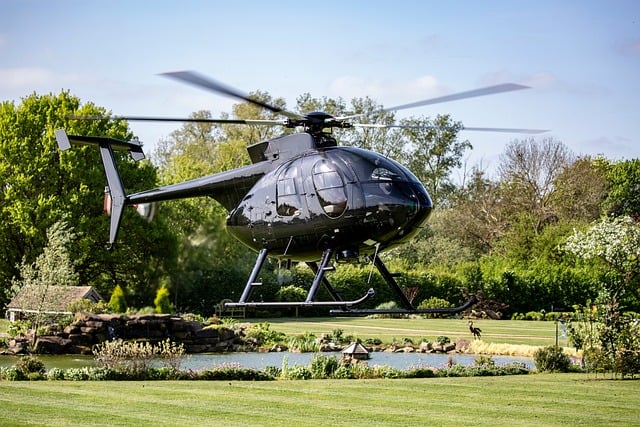
The Mi-17 V5 Helicopter Crash: Human Error Blamed for Deadly Accident
The recent Mi-17 V5 helicopter crash, a devastating event that took the lives of General Bipin Rawat, his wife, and ten others, has sparked a thorough investigation. Preliminary reports, detailed in a recent Lok Sabha committee report, point to human error as the primary cause. This tragic incident highlights the critical need for rigorous pilot training and improved safety procedures within the armed forces. The crash, occurring near Coonoor, Tamil Nadu, serves as a stark reminder of the potential dangers in aviation. Furthermore, the investigation emphasizes the importance of meticulously examining the circumstances surrounding such accidents.
The report's findings suggest that the pilot's spatial disorientation, potentially exacerbated by sudden cloud cover and unexpected weather changes, played a key role in the crash. This incident underscores the importance of real-time weather monitoring and robust safety protocols. Importantly, the report also reveals a concerning trend, with human error (aircrew) being a significant factor in a considerable number of accidents during the Thirteenth Defence Plan period. This data underscores the need for a comprehensive review of existing protocols and a commitment to enhanced pilot training programs. The investigation, conducted by a dedicated team, delves into the sequence of events leading to the crash, focusing on pilot actions and contributing factors. Ultimately, the goal is to prevent similar incidents in the future.
"Human Error (Aircrew)" was the primary cause of the Mi-17 V5 helicopter crash. - Lok Sabha Committee Report
Mi-17 V5 Helicopter Crash: Human Error Blamed for Deadly Accident
Tragic Loss of Lives in the Mi-17 V5 Crash
The Standing Committee on Defence report, tabled in the Lok Sabha recently, has detailed the devastating Mi-17 V5 helicopter crash on December 8, 2021. This accident tragically claimed the lives of Chief of Defence Staff General Bipin Rawat, his wife Madhulika Rawat, and ten other individuals. The report unequivocally attributes the cause to "Human Error (Aircrew)." This finding underscores the critical need for thorough investigation and preventative measures within the armed forces. The crash, which also claimed the life of Group Captain Varun Singh, the sole survivor, highlights the devastating consequences of pilot error.
The Circumstances Surrounding the Mi-17 V5 Crash
The Mi-17 V5 helicopter, carrying General Rawat and other personnel, crashed near Coonoor, Tamil Nadu, after departing from Sulur Air Force base. The aircraft was en route to the Defence Services Staff College in Wellington. Preliminary findings indicate that the crash resulted from the pilot's loss of control due to spatial disorientation, likely exacerbated by unexpected weather changes and subsequent cloud cover. This tragic incident serves as a stark reminder of the dangers inherent in aviation and the importance of meticulous pilot training and operational procedures.
Pilot Spatial Disorientation and CFIT
The report emphasizes that the pilot's spatial disorientation, triggered by entering cloud cover, played a critical role in the crash. The unexpected change in weather conditions, including the sudden entry into cloud cover, likely contributed to the pilot's disorientation. The subsequent Controlled Flight Into Terrain (CFIT) further compounded the tragedy. This incident underscores the importance of rigorous pilot training, particularly in adverse weather conditions, and the need for robust safety protocols.
Human Error as a Recurring Factor in Accidents
The report reveals a concerning trend. "Human Error (Aircrew)" emerged as the most frequent cause of accidents during the Thirteenth Defence Plan period (2017-2022). A total of 16 out of 34 recorded accidents were attributed to this factor. This alarming statistic emphasizes the need for enhanced pilot training programs, improved safety procedures, and a comprehensive review of existing protocols to mitigate the risk of human error.
Investigation and Findings of the Inquiry Team
The inquiry team's preliminary findings shed light on the sequence of events leading to the crash. The team's investigation focused on the pilot's actions and the contributing factors, including the unexpected change in weather conditions. The report highlights the importance of meticulous investigation to understand the root causes of accidents and to implement corrective actions to prevent similar incidents in the future.
The Role of Weather Conditions in the Accident
The report highlights the crucial role of unexpected weather changes in the crash. The sudden entry into cloud cover likely contributed to the pilot's spatial disorientation, impacting their ability to maintain control of the helicopter. This underscores the importance of real-time weather monitoring and communication protocols to ensure the safety of aircraft operations in potentially hazardous conditions.
Impact of the Crash on the Defence Forces
The tragic loss of General Rawat and other personnel has had a profound impact on the Indian Defence Forces. The incident has prompted a thorough review of safety protocols and pilot training programs. The report's findings emphasize the need for continuous improvement in aviation safety and a commitment to preventing similar incidents in the future.
Lessons Learned from the Mi-17 V5 Crash
The Mi-17 V5 crash serves as a critical lesson for the Indian Air Force and the defence forces. The report's emphasis on human error highlights the need for rigorous pilot training, enhanced safety protocols, and real-time weather monitoring. This incident underscores the importance of constant vigilance and proactive measures to prevent future tragedies.
Recommendations for Enhanced Safety Measures
The report offers several recommendations for enhancing aviation safety. These include: improved pilot training programs focusing on spatial disorientation and adverse weather conditions, enhanced communication protocols between pilots and air traffic control, and the implementation of advanced safety features in helicopters. These measures are crucial for mitigating the risk of future accidents.
Table Comparing Accident Data
Category | Number of Accidents | Human Error (Aircrew) |
13th Defence Plan (2017-2022) | 34 | 16 |
Table Detailing Personnel Involved
Name | Role | Status |
General Bipin Rawat | Chief of Defence Staff | Deceased |
Madhulika Rawat | Wife of General Rawat | Deceased |
Group Captain Varun Singh | Pilot | Deceased |
Topic | Details | Additional Information (if available) |
Mi-17 V5 Helicopter Crash | Tragic helicopter crash on December 8, 2021, near Coonoor, Tamil Nadu, claiming the lives of Chief of Defence Staff General Bipin Rawat, his wife Madhulika Rawat, and ten others. | The crash involved a Mi-17 V5 helicopter departing from Sulur Air Force base, en route to the Defence Services Staff College in Wellington. |
Cause of Crash | Human Error (Aircrew), specifically pilot spatial disorientation likely exacerbated by unexpected weather changes and subsequent cloud cover, leading to a Controlled Flight Into Terrain (CFIT). | The Standing Committee on Defence report detailed the findings. |
Pilot Spatial Disorientation | Pilot's spatial disorientation triggered by entering cloud cover played a critical role in the crash. | Sudden entry into cloud cover, unexpected weather changes, and the pilot's loss of control contributed to the accident. |
CFIT (Controlled Flight Into Terrain) | The subsequent CFIT further compounded the tragedy. | CFIT occurs when a pilot, despite being aware of a hazard, loses control of the aircraft and impacts terrain. |
Human Error Trend | Human Error (Aircrew) was the most frequent cause of accidents during the Thirteenth Defence Plan period (2017-2022). | 16 out of 34 recorded accidents were attributed to this factor. |
Weather Conditions | Unexpected weather changes, including sudden entry into cloud cover, likely contributed to the pilot's spatial disorientation. | Real-time weather monitoring and communication protocols are crucial for aviation safety in hazardous conditions. |
Impact on Defence Forces | The crash had a profound impact on the Indian Defence Forces, prompting a review of safety protocols and pilot training programs. | The incident highlighted the need for continuous improvement in aviation safety. |
Recommendations for Enhanced Safety | Improved pilot training, enhanced communication protocols, and implementation of advanced safety features in helicopters. | These measures are crucial for mitigating the risk of future accidents. |
Mi-17 V5 Helicopter | Type of helicopter involved in the crash. | A common military transport helicopter. |
General Bipin Rawat | Chief of Defence Staff, deceased in the crash. | A highly decorated Indian Army general. |
Madhulika Rawat | Wife of General Rawat, deceased in the crash. | Known for her philanthropic activities. |
Group Captain Varun Singh | Pilot, sole survivor, deceased in the crash. | Highlights the severity of the accident. |
SEO Keyphrase | Mi-17 V5 Helicopter Crash | The central topic of the news report. |
Category | Number of Accidents | Human Error (Aircrew) |
13th Defence Plan (2017-2022) | 34 | 16 |
Name | Role | Status |
General Bipin Rawat | Chief of Defence Staff | Deceased |
Madhulika Rawat | Wife of General Rawat | Deceased |
Group Captain Varun Singh | Pilot | Deceased |
Space for advertisement
GENERAL
Dec 19, 2024
Mi-17 V5 Helicopter Crash: Human Error Blamed for Deadly Accident
The Mi-17 V5 helicopter crash killing General Bipin Rawat and others was caused by human error according to a report. Learn more about the accident.

